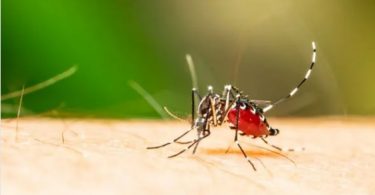
Abstract:
Urtica urens, commonly known as small nettle, plays a significant role in homeopathy due to its wide-ranging therapeutic applications. This review examines its effectiveness in treating various conditions, including skin disorders such as urticaria and eczema, as well as inflammatory issues like arthritis. Urtica urens is particularly noted for its ability to alleviate itching, redness, and other allergic symptoms. Furthermore, it is used to address urinary irritations and emotional disturbances, including anxiety and restlessness. Supported by clinical experiences and case studies, this remedy demonstrates substantial efficacy in homeopathic practice. The article also discusses recommended potencies and individualized treatment approaches, emphasizing the importance of tailored care in homeopathy. Overall, Urtica urens exemplifies the diverse therapeutic potential of homeopathic remedies.
Keyword: Urtica urens, Homoeopathy, Individualised treatment approach.
Introduction:
Urtica urens (syn: Urtica trianae Rusby), commonly referred to as lesser nettle, belongs to the family Urticaceae. It is an erect to ascending annual herb widely distributed throughout the temperate zones of the world. Urtica urens is commonly referred to as burning nettle or dog nettle in English, ortie grise in French, and Brennnessel in German. It closely resembles the stinging nettle (Urtica dioica L.) in habit, differing primarily in smaller leaves and flowers. The term ‘Urtica’ originates from the Latin word ‘urere,’ meaning to burn or sting, reflecting the presence of urticant hairs. Native to Europe, it has been introduced in Uttarakhand, India, and is predominantly found in shady, moist areas.
Urtica urens has been reported to possess anti-oxidant and anti-microbial (leaves), chemoprotective (aerial parts), anxiolytic (aerial parts), anti-inflammatory (leaves), anti-arthritis(leaves) and anti-bacterial (leaves) activities.1
In homeopathy, Urtica urens is often used to treat conditions related to uric acid, such as gout, joint pain, uric acid diathesis, lithiasis, urticaria, allergies, itching, insect bites, and burns. Additionally, it is employed to enhance lactation (agalactia) in females and to support conditions affecting the spleen.
Dr.Brent was among the first use this medicine. He writes that it is highly beneficial in improving arthritis and other urinary disorder.2
Dr. Grady writes that if its extract is put into the nose, it immediately stops nosebleeds. It is also an excellent remedy for vaginal diseases. Moreover, it is very useful for pleurisy, pneumonia, and whooping cough. He further explains that this medicine can neutralize the poison from mercury, snakes, and scorpions.2
Doctor Cooper writes that in cases of joint pain, tying the seeds of this plant to the area affected by gout or joint pain is considered very beneficial. Additionally, if a leaf of this plant is placed on the tongue and pressed against the palate, it can stop nosebleeds.2
Dr. L. Telangam Lingham wrote about a female patient in Homeopathic Record, Volume 15, page 244. She had extreme itching and swelling in her genital area. Thirteen years prior, the same patient had notable discharge from her right ovary, and her husband was also found to have signs of gonorrhea. Urtica Urens 1x alleviated all her symptoms.2
Dr. Pierce recounts the case of a woman who had been unable to conceive for three to four years. One day, for an unknown reason, she boiled this plant and drank about two ounces of it. As a result, her breasts swelled, and a sap-like secretion began to emerge, which was soon followed by clear milk. Based on this observation, Dr. Pierce suggests that for women experiencing low or no milk production after childbirth, consuming this plant can offer significant benefits in stimuting lactation.2
In the second edition of Dr. Hale’s *New Remedies*, a proving of Urtica was conducted by two individuals using progressively increasing doses of the first decimal dilution.3
Dr. Fiard reported to the French Academy of Medicine a case of poisoning from an infusion of the plant, in which the upper half of the body experienced intense burning sensations, accompanied by tingling, numbness, and severe itching.3
Dr. Terry praises it as an effective remedy for addressing milk deficiency in nursing mothers.3
In one reported case of poisoning, symptoms included “prickling heat, numbness, and a burning sensation on the skin of the face, arms, shoulders, and chest; swelling and edema of the eyes; vesicular eruptions on the lips, nose, and ears; difficulty speaking accompanied by intense anxiety; and ultimately, desquamation.” — J.G. Houard, M.D.4
” As soon as she lay down again, the rash and itching disappeared entirely, only to resurface the moment she got up.” Treatment will be effective only when these symptoms are prominent.” — Dr. Chapusat.4
“The upper part of the body was significantly swollen, pale, and edematous, covered with confluent small, transparent vesicles filled with serum and sudamina.” — Dr. King.4
“There was a sensation of soreness in the bowels while lying down, and upon pressure, a sound reminiscent of water sloshing within.” — Dr. Shaw. (Peritonitis followed by effusion)4
Historical Background:
Stinging nettle herb is a staple among Western herbal practitioners, well-known for its surprising sting. The genus name Urtica comes from the Latin terms “uro,” which means to burn, and “urere,” meaning to sting (Grieve, 1931). Historically, individuals have utilized the sting of fresh stinging nettle by striking arthritic or paralytic limbs to stimulate circulation and warm the joints in a practice called “urtication” (Green, 1824). According to reports, ancient Egyptians used nettle infusions to alleviate arthritis and lumbago (Harrison, 1966).Roman soldiers would reportedly strike themselves with stinging nettle to keep warm and brough According to reports, seeds of a similar species, the Roman nettle (U. pilulifera), to England, believing that the British climate was too cold to endure (Grieve, 1931). The practice of urtication, or rubefaction, emerged as a popular folk remedy for conditions like arthritis, rheumatism, and muscular paralysis, likely marking one of the earliest medicinal applications of stinging nettle.5
Symptoms of Urtica Urens in Different Authors
| AUTHOR | KEY SYMPTOMS | FOCUS ON SPECIFIC CONDITION | MODALITIES |
| BOERICKE6 | Itching, burning, stinging (skin).
– Hives (urticaria) with red blotches. -Rheumatism with urticaria. – Useful in first-degree burns, insect stings, and rashes. |
Allergies to shellfish and insect bites.
– Burns (hot water, steam). – Swelling from water retention or allergies. |
Worse from cold.
– Better from warmth. |
| CLAR KE7 | Urticaria, itching, burning, stinging.
– Blisters, vesicular eruptions. – Gouty pains with alternating skin symptoms |
– Allergic reactions (skin, food).
– Uterine hemorrhage. – Galactagogue (enhancing milk production). – Edema, especially face and eyelids. |
Worse from cold and touch.
– Better from warmth, lying down |
| KENT8 | Acute urticaria with intense itching, burning.
– Stinging and burning |
||
| TYLER9 | Known for allergic reactions, particularly hives, and stinging nettle effects.
– Rapid eruption of skin with violent itching and burning. – Blistering skin conditions. – Indicated for rheumatic conditions. |
Especially useful for rashes from shellfish, with burning and itching | Aggravation from warmth and amelioration from cold application |
Conclusion:-
Urtica urens holds vast scope in homeopathy, especially in conditions related to skin, kidneys, and burns. It is particularly useful in treating urticaria, burns, and stinging skin eruptions resembling nettle rashes. Its effects on the urinary system make it valuable in addressing gout and uric acid-related conditions. Urtica urens also acts well in cases of lactation difficulties and offers relief in rheumatism, particularly when associated with skin symptoms. The remedy’s broad application is grounded in its capacity to stimulate healing in various acute and chronic conditions, provided the symptom similarity aligns.
This wide range makes Urtica urens a vital remedy in homeopathic practice, known for its ability to promote rapid recovery in acute affections while also addressing deeper systemic disturbances, particularly in the skin, metabolism, and mucous membranes.
Reference :-
- Patel S, Biswas B, Rambabu K, Jhansi S, Potu R, Sundaram EN, Arya R. Pharmacognostic and physicochemical study of Urtica urens L.: A drug used in Homoeopathy.
- Ram, K. & Jamia Hamdard, D., 1938. Cyclopedia Of Homeopathic Drugs, Bharat Homeo Pharmacy, Lucknow. Lucknow, India. Retrieved from https://coilink.org/20.500.12592/pf3p5h on 08 Oct 2024. COI:
20.500.12592/pf3p5h. - Hughes R. A manual of pharmacodynamics. Leath & Ross; 1893.
- Burt WH. Physiological Materia Medica: Containing All that is Known of the Physiological Action of Our Remedies; Together with Their Characteristic Indications and Pharmacology. Gross & Delbridge; 1881.
- Upton R. Stinging nettles leaf (Urtica dioica L.): Extraordinary vegetable medicine. Journal of herbal medicine. 2013 Mar 1;3(1):9-38.
- Boericke W. Pocket manual of homoeopathic Materia Medica & Repertory: comprising of the characteristic and guiding symptoms of all remedies (clinical and pahtogenetic [sic]) including Indian Drugs. B. Jain publishers; 2002.
- Clarke J. A Dictionary of Practical Materia Medica. 3rd ed. The Homoeopathic Publishing Company, London; 1987. p. 1486.
- Kent JT. Lectures on homoeopathic materia medica. New Delhi, India:: Jain Publishing Company; 1980.
- Tyler ML. Homoeopathic drug pictures. B. Jain Publishers; 1990.
Author
DR.SURUCHI SARRAF; DR. SHIRIN SULTANA
- B.H.M.S. (PG. Scholar), Department Of Organon Of Medicine and Homoeopathic Philosophy,R.B.T.S Govt. Homeopathic Medical College& Hospital Muzaffarpur, Bihar.
- B.H.M.S. (PG. Scholar), Department of practice of medicine,R.B.T.S Govt. Homeopathic Medical College& Hospital Muzaffarpur, Bihar.





